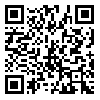BibTeX | RIS | EndNote | Medlars | ProCite | Reference Manager | RefWorks
Send citation to:
URL: http://irje.tums.ac.ir/article-1-5282-en.html
Background & Objectives : Health risk behaviors in adolescence, such as alcohol consumption and smoking, can affect both short-term and long-term health. The aim of study was to estimate the prevalence of health risk behaviors among high school students of Qazvin.
Methods : The target population of this descriptive study was all high school students of Qazvin who were enrolled in the 1390-91 academic year. The sample group included 160) 239 girls, 271 boys) students that were selected by randomly multistage sampling. The assessment instrument was the Youth Risk Behaviors Surveillance System (YRBSS) Questionnaire.
Results: Findings indicated that use of hookah was the most popular in girls and boys (59%) as compared with cigarette smoking (32.7%), drug use (7.3%), and alcohol consumption (16.7%). The prevalence of physical violence in and outside the school in one year, carrying weapons to school in a month, cigarette smoking in the school in one month, smoking hookah, and alcohol and opioid use during one month were more frequently observed in boys than girls. The use of the seat belt was more common among girls than boys, and the total prevalence of using the seat belt was 23.7%.
Conclusion : Given the high prevalence of high risk behaviors among high school students, it is necessary to develop a high risk behaviors surveillance system and use the obtained information to devise preventive measures at the individual, school, and family levels.
Received: 2015/02/26 | Accepted: 2015/02/26 | Published: 2015/02/26
| Rights and permissions | |
 |
This work is licensed under a Creative Commons Attribution-NonCommercial 4.0 International License. |





